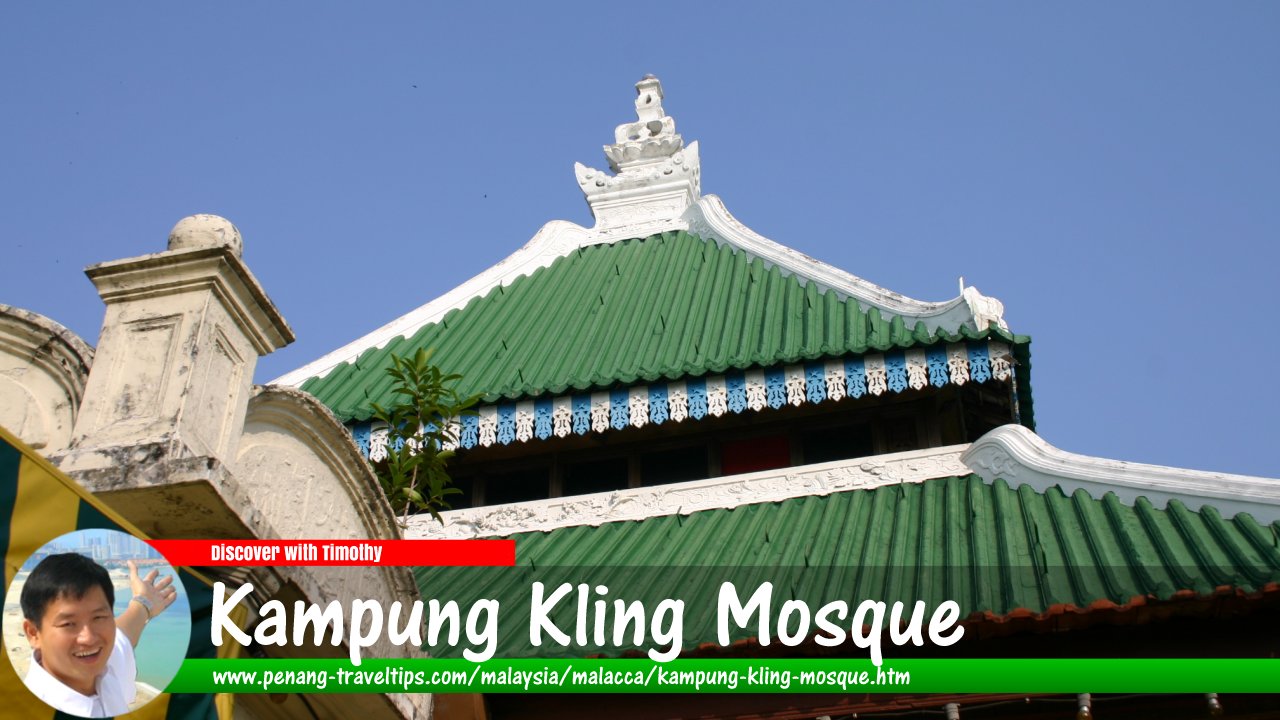 Kampung Kling Mosque, Malacca (11 July, 2005)
Kampung Kling Mosque, Malacca (11 July, 2005)
Kampung Kling Mosque (GPS: 2.19677, 102.24749) in Malacca is one of the oldest mosques in Malaysia. Built in 1748, it is located on the corner of Jalan Hang Lekiu and Jalan Tokong, or Temple Street, in Malacca. All the major faiths in Malaysia are represented along this road. In addition to the Kampung Kling Mosque, the Cheng Hoon Teng Chinese Temple and the Sri Poyyatha Vinayagar Moorthi Temple are also along Jalan Tokong.
Although the road is today lined with Chinese shophouses, the characteristic of the street was very different when the mosque was erected. At that time there was a village called Kampung Kling, which runs along the coast to the west bank of the Malacca River. It was inhabited by Muslim Indians or Klings from South India. The multiple styles on the mosque attest to the synchratic building tradition that flourished in Malacca at that time, as it was a major trading port from the fourteenth through the eighteenth centuries.
Like most Southeast Asian mosques, Masjid Kampong Kling is built on a square plan rather than the rectangular or hexagonal plan as in the case of most Middle Eastern mosques. An arcaded verandah wraps around the prayer hall, and held up by corinthian columns.
Supported by timber post-and-beam construction, Kampong Kling's triple-tiered hipped roof is indicative of mosque in the Malacca style. There is a fountain-like pool behind the mosque for ablutions. It is raised a few steps above ground level and circumambulated by a similarly raised and covered walkway.
The minaret was built entirely of masonry in contrast to the accompanying timber mosque. It has an appearance similar to a Chinese pagoda or stupa form, another Malacca characteristic. Renaissance embellishments include the arched windows and piping that traces them. Minarets are not traditional to Malay Islamic architecture, though they have become increasingly more prevalent and are useful in demarcating the mosque in dense urban areas. In 1868 a high wall was erected to protect the mosque from the street.
Chinese ceramic tiles were imported to adorn the roof, the floor and the lower walls. Decorative motifs such as the curved eaves terminating in sculptural finials further point to an Oriental influence, as is the rooftop ornament, or mastaka. Built during the Dutch occupation that followed the period of Portuguese rule, the mosque also spot European touches such as the rendered plaster on the internal masonry walls.
Masjid Kampung Kling is  on the Map of Mosques in Malacca
on the Map of Mosques in Malacca
Kampung Kling Mosque is  on the Map of Malacca
on the Map of Malacca
 Kampung Kling Mosque, Malacca (11 July, 2005)
Kampung Kling Mosque, Malacca (11 July, 2005)
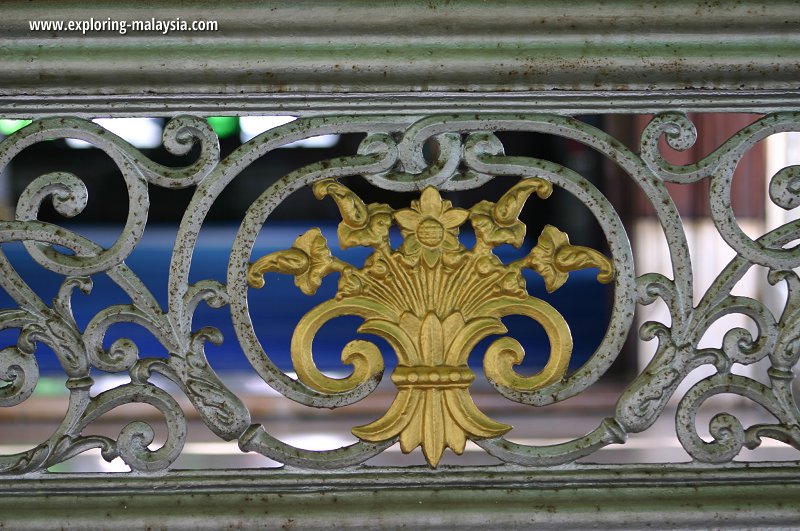 Details on the balustrade of Kampung Kling Mosque (11 July, 2005)
Details on the balustrade of Kampung Kling Mosque (11 July, 2005)
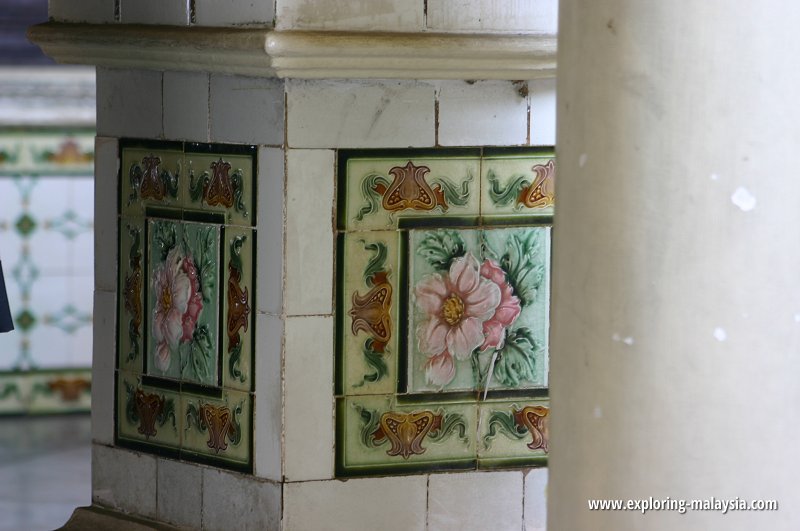 The tiles used on the Kampung Kling Mosque is similar to those found in many Peranakan homes in Malacca (11 July, 2005)
The tiles used on the Kampung Kling Mosque is similar to those found in many Peranakan homes in Malacca (11 July, 2005)
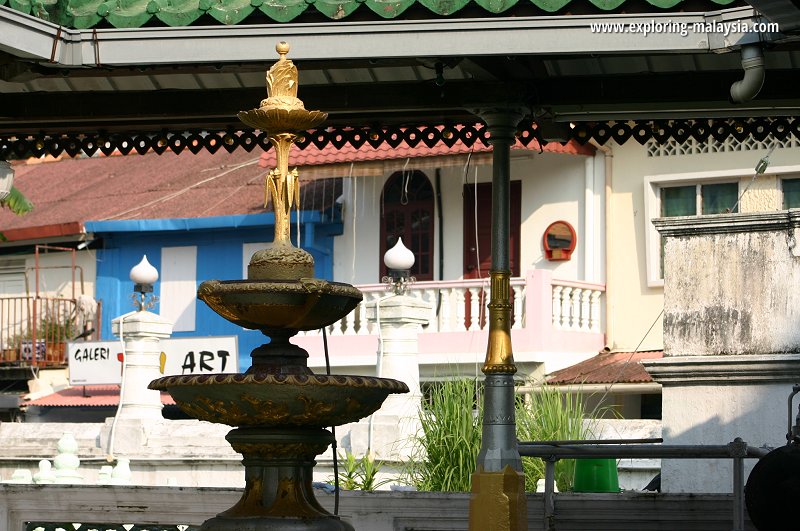 A fountain in the courtyard of Kampung Kling Mosque (11 July, 2005)
A fountain in the courtyard of Kampung Kling Mosque (11 July, 2005)
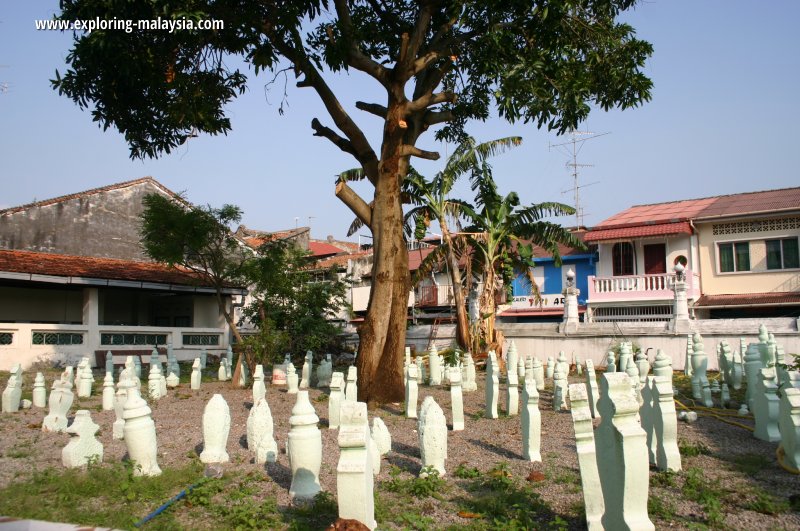 The cemetery in the compound of Kampung Kling Mosque (11 July, 2005)
The cemetery in the compound of Kampung Kling Mosque (11 July, 2005)
Discover Malacca; list of Mosques in Malacca and Mosques in Malaysia
 Map of Roads in Malacca
Map of Roads in Malacca
 Latest updates on Penang Travel Tips
Latest updates on Penang Travel Tips

Copyright © 2003-2025 Timothy Tye. All Rights Reserved.

 Go Back
Go Back